
Rick Dangerous is a platform game developed by Core Design for the Acorn Archimedes, Amiga, Atari ST, Amstrad CPC, ZX Spectrum, Commodore 64, and MS-DOS. The game was released in 1989 and published by MicroProse on the Firebird Software label in the UK, and on the MicroPlay label in America. It was also published in Spain by Erbe Software. Later, it was released with two other games, Stunt Car Racer and MicroProse Soccer, on the Commodore 64 Powerplay 64 cartridge. The game was followed by a sequel, Rick Dangerous 2, in 1990. Loosely based on the Indiana Jones film franchise, the game received mixed reviews from critics.

Rampart is a 1990 video game released by Atari Games and Midway Games that combines the shoot 'em up, strategy, and puzzle genres. It debuted as an arcade game with trackball controls, and was ported to home systems. It had a limited US release in October 1990, and a wide release in early 1991. It was distributed in Japan by Namco.

Llamatron is a multidirectional shooter video game programmed by Jeff Minter of Llamasoft and released in 1991 for the Atari ST and Amiga and in 1992 for MS-DOS. Based on Robotron: 2084, players of Llamatron control the eponymous creature in an attempt to stop an alien invasion of Earth and rescue animals—referred to as "Beasties"—for points. Players advance by destroying all of the enemies on each level using a laser that fires automatically in the direction that the Llamatron is moving. Various power-ups exist to aid the player in defeating the wide variety of enemies and obstacles they face along the way.
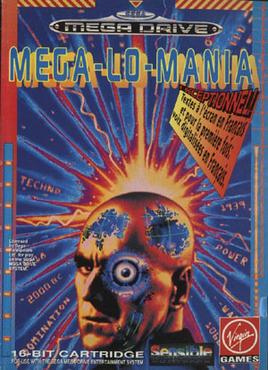
Mega-Lo-Mania is a real-time strategy video game developed by Sensible Software. It was released for the Amiga in 1991 and ported to other systems. It was released as Tyrants: Fight Through Time in North America and Mega Lo Mania: Jikū Daisenryaku (メガロマニア時空大戦略) in Japan. The game was re-released on ZOOM-Platform.com via Electronic Arts on August 31, 2022.

Silmarils was a French computer game software company founded in 1987 by Louis-Marie and André Rocques. It produced games for PC, Amiga, Amstrad CPC, Macintosh, Atari ST and Atari Falcon.
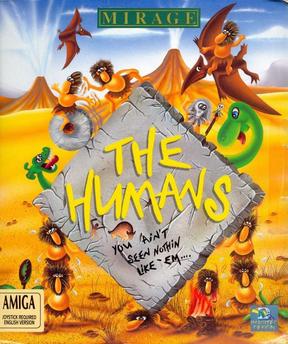
The Humans is a puzzle-platform video game developed by Imagitec Design in Dewsbury, England and originally published by Mirage Technologies for the Amiga in May 1992. It was later ported to other home computers and consoles. The goal of the game varies per level but usually revolves around bringing at least one of the player-controlled humans to the designated end area marked by a colored tile. Doing this requires players taking advantage of the tribe's ability to build a human ladder and use tools such as spears, torches, wheels, ropes and a witch doctor in later levels.

Cyberball is a video game released in arcades in 1988 by Atari Games. The game is a 7-man American football using robotic avatars of different speeds, sizes, and skill sets set in the year 2022. Originally released for arcades, Cyberball was ported to several home consoles and computers.
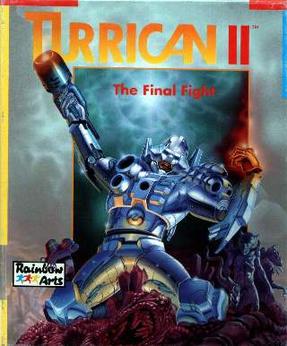
Turrican II: The Final Fight is the second game of the Turrican series. The game, developed by Factor 5 was released in 1991 for the Commodore Amiga. This version was finished before the C64 version, but Manfred Trenz cites the C64 version as the original design. Turrican II was also released for the CDTV, Atari ST, Amstrad CPC and ZX Spectrum, and later for DOS, and also for the Mega Drive/Genesis and Game Boy rebranded as Universal Soldier.
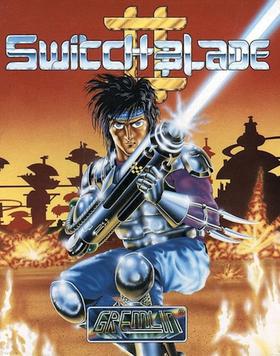
Switchblade II is a 1991 side-scrolling action-platform run and gun video game originally developed and published by Gremlin Graphics in Europe for the Amiga home computers. It is the sequel to the original Switchblade, which was solely created by Simon Phipps at Core Design and released earlier in 1989 across multiple platforms. Despite being primarily developed in the UK, its graphics had a distinctly Japanese style similar to anime or manga.

Fire Power is a military tank action game developed by Silent Software for the Amiga. It was released in 1987 and published by MicroIllusions and Activision. Ports were released for the Apple IIGS, the Commodore 64 and for MS-DOS in 1988. An Atari Lynx version was planned but development never started due to internal conflict with Epyx.

RoadBlasters is a combat racing video game released in arcades by Atari Games in 1987. In RoadBlasters, the player must navigate an armed sports car through 50 different rally races, getting to the finish line before running out of fuel.
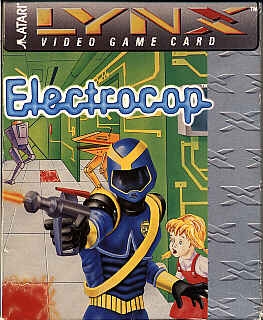
Electrocop is a 1989 action video game developed by Epyx and published by Atari Corporation in North America and Europe for the Atari Lynx. It was released in Japan on November 25 of the same year, where it was distributed by Mumin Corporation. One of the first games written for the platform, it was one of the launch titles that were released along with the system in North America.

Xybots is a 1987 third-person shooter arcade game by Atari Games. In Xybots, up to two players control "Major Rock Hardy" and "Captain Ace Gunn", who must travel through a 3D maze and fight against a series of robots known as the Xybots whose mission is to destroy all mankind. The game features a split screen display showing the gameplay on the bottom half of the screen and information on player status and the current level on the top half. Designed by Ed Logg, it was originally conceived as a sequel to his previous title, Gauntlet. The game was well received, with reviewers lauding the game's various features, particularly the cooperative multiplayer aspect. Despite this, it was met with limited financial success, which has been attributed to its unique control scheme that involves rotating the joystick to turn the player character.

Metal Masters is a 2D fighting video game first released in 1991 for the Atari ST, IBM PC, and Amiga. It was ported to the Nintendo Game Boy in 1993.

Space Gun is a 1990 first-person shooter arcade game released by Taito. The game is set aboard a crippled space station that has been overrun by hostile alien creatures. The objective is to rescue human crew members while destroying the alien creatures. The game lets the player shoot limbs off the creatures, resulting in blood splatters.

Last Ninja 3 is an action-adventure video game that was developed and published by System 3 for the Commodore 64, Amiga, Atari ST in 1991. It is a sequel to the 1988 game Last Ninja 2.

Cloud Kingdoms is a puzzle game published by Millennium Interactive for the Amiga, Atari ST, Commodore 64, and MS-DOS in 1990. The player controls Terry, a green bouncing sphere, on a quest to recover his magic crystals that have been stolen by Baron von Bonsai. To do so, he must travel through the eponymous Cloud Kingdoms, avoiding enemies and hazards while collecting all of the crystals within the game's time limit. The game was developed by Dene Carter at Logotron, with sounds and music composed by David Whittaker.

Crystals of Arborea is a medieval fantasy role-playing video game developed and published by Silmarils, and released in 1990 for the Amiga, Atari ST and MS-DOS. The game is a precursor to the Ishar trilogy, a series also produced by Silmarils, and together they were re-distributed as the Ishar Compilation in 2009.
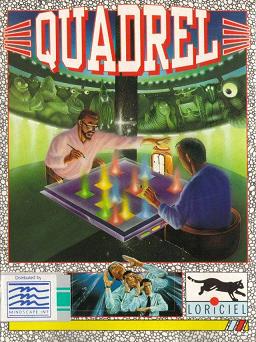
Quadrel is a puzzle video game developed by Loriciels and released in June 1991. It was released for MS-DOS, Amiga, Atari ST, and Amstrad CPC

Robinson's Requiem is a 1994 survival simulation video game developed and originally published by Silmarils exclusively in Europe for the Atari ST, Atari Falcon and Amiga. Taking place in the 22nd century where Earth and colonized planets are facing overpopulation, the game sees players assuming the role of Robinson officer Trepliev 1 from the Alien World Exploration department in his attempt to escape imprisonment from the fictional planet of Zarathustra alongside another AWE Robinson named Nina1, while facing several hostile creatures and dangers in order to survive.




















